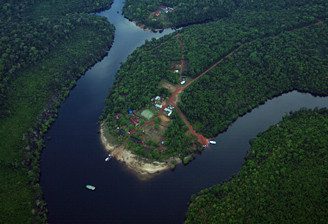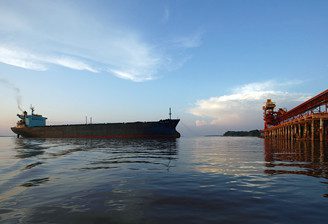Alcoa World Alumina (AWA) in partnership with the Municipal Administration of Juruti and in agreement with the local community have prepared and introduced an initiative called the Positive Agenda. The Positive Agenda, which has so far received investment of R$69 million, aims to greatly improve quality of life by investing in areas such as rural and urban infrastructure, health, education, culture, the environment, public security and social assistance. These voluntary actions have been agreed directly with the community following public hearings that have resulted in the license being granted for the setting up of Juruti Mine.
Some of the actions under the Health section of the Postive Agenda include: construction of a hospital, which is a benchmark for medium and high complexity medical care; remodeling and extension of the “Francisco Barros”, Municipal Hospital, where a mixed unit of a Medical-Outpatient Care Center and a Mother & Infant Inpatient Unit are now available; ensuring that all health care units that have been built and/or remodeled have been furnished, supplied with instruments and fully equipped with medical technology; New Health Center Units at the Vila de Tabatinga and Vila Muirapinima (or Juruti Velho); Construction of a laboratory at the Municipal Health Department for researching by the Evandro Chagas Institute; provision of Basic Health Units in the Palmeira and Maracanã districts; Agreement for supporting the basic pharmacy and reinforcement of the municipality’s team of health professionals (completed in 2008).
Mining Rehabilitation and Biodiversity Conservation
The Juruti Mine is one of three Alcoa locations globally that have developed a biodiversity action plan. The global goal is to achieve a footprint-neutral condition in mining operations by 2030, which means that the amount of area disturbed for mining each year will be offset by an equal amount of rehabilitated land.
To this end, the Juruti mine is experiencing a world class landscape restoration which is based on a new approach called the nucleation method. The nucleation method helps reduce costs by 40% compared to the traditional rehabilitation method due to decreased topsoil removal and branch disposal. Flora is returning at a rate exceeding expectations, with some vegetation and trees critical for attracting and maintaining wildlife, appearing in the first year instead of the projected third to fifth years. Please click on the link to the left of this page to find out more.
Outside the plant and mining areas, the Juruti Mine, Alcoa Foundation and Conservation International, in partnership with local authorities and communities, are developing a program to support conservation of the biodiversity in the Juruti municipality as well as in the Tapajós river biodiversity corridor, one of the richest areas for species in the Amazon region.
The program focuses on the Juruti territory because in spite of its great natural capital, the municipality lacked a strategy for biodiversity resulting in a loss of great opportunities for local development though the sustainable use of its natural capital. This initiative is addressing the challenge of developing and adoption of the Strategic Plan for Conservation and Sustainable Use of Biodiversity in order to improve human wellbeing through the promotion of new sustainable economic chains that will create new jobs and income opportunities, whilst preserving the municipality’s natural capital.
As a result, in 2015 the municipally established its first protected area – the Lago Mole Wildlife Reserve. The Reserve, a kind of nursery for several fishes and reptiles species in an area of 652.90 hectares, strengthens local environmental governance by promoting new bio-businesses based on non-timber forest products such as Brazil nut and Açai fruit.
Sustainable Juruti Approach: A Model for Sustainability
The installation of large-scale projects in the Amazon have raised awareness of the impact that these ventures have on the environment and on local communities and their social relations. Some companies that are committed to shifting the paradigm towards sustainability have taken the initiative and are pursuing business practices that not only comply with existing legislation but also incorporate effective and lasting sustainability – both in their internal operations and in their relations with local populations and environments. In spite of this positive context, there are still very few innovative alternative forms of intervention that promote sustainable local development, particularly in regions with complex socio-environmental configurations.
The Sustainable Juruti approach is a proposed model for local development and it addresses the need for such an agenda and provides guidelines for its implementation, taking into account the establishment of the Juruti Mine, a large-scale mining operation on the banks of the Amazon River.
The model is based on a tripod approach with multi-institutional partnerships aimed to provide mutual benefits for companies, communities and local government. Its components include: 1) The Sustainable Juruti Council, a permanent forum for dialog and collective action among the parties, considering a long-term agenda; 2) Sustainability Indicators monitoring the development of Juruti and providing the Council with qualified information; and 3) The Sustainable Juruti Fund, which finances activities prioritized by the Council and mobilizes resources to generate an endowment fund for present and future generations.
We aim to effectively promote sustainable development and provide guidance for companies, government and civil society on alternative approaches that are more consistent with the expectations and concerns of the local population. The engagement of the Juruti Mine and the example it sets when implementing initiatives such as these is paramount at a time when society is growing increasingly more demanding in terms of corporate responsibility.


